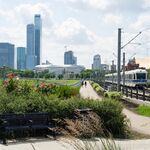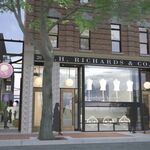I'm spending some time in my hometown in Brazil for the holidays and this is something that struck me hard.
The city proper has about half of the size of Edmonton proper (in a metro of about 1.3M), but the DT has basically 2x the population, and it shows.
And I'm not talking disorganized, "dirty" density like people usually associate with Latin America, but a fairly tidy, ordered and well cared for area, with LOTS of street life. The whole central area is around the size of Edmonton DT + Oliver, but has upwards of 65k people, and pretty much everything is walkable.
Also, streets are cleaner, there's a LOT less homeless roaming around and you see constant police presence patrolling the streets on foot and bikes.
I'll be DT again, tomorrow, and I'll try to snatch some pictures, for illustration.
Now, what boggles my mind is: a city with about 1/8th of the GDP, in a significantly poorer country, with an overall much more complex situation in terms of economic and social issues, a level of corruption that Canadians can't even begin to comprehend, more layers of bureaucracy than the insides of an onion can get all of this done (and the city administration managed to improve it significantly over the past 4 years, since I've been here.), why can't one of the richest cities, in one of the richest provinces of one of the richest countries on Earth?




